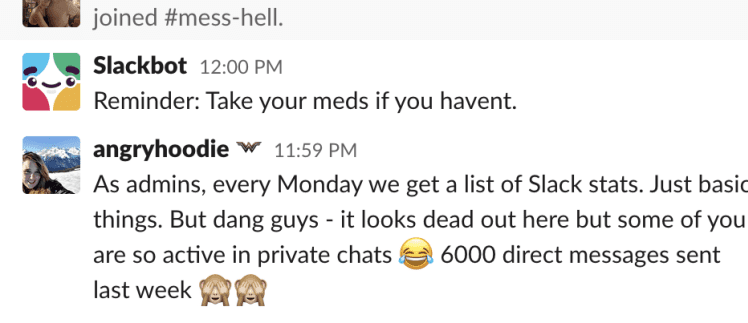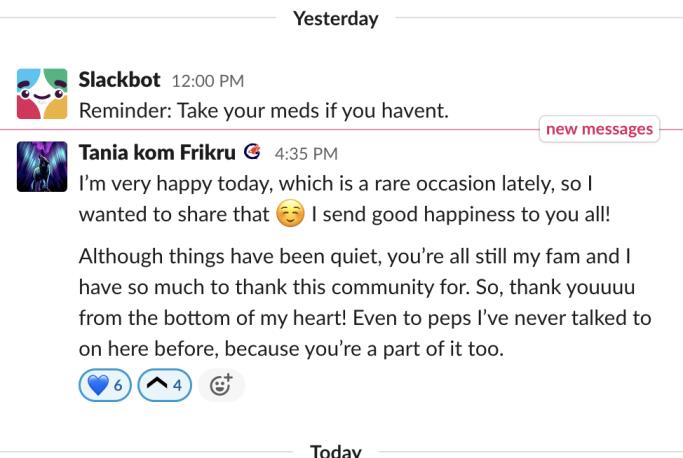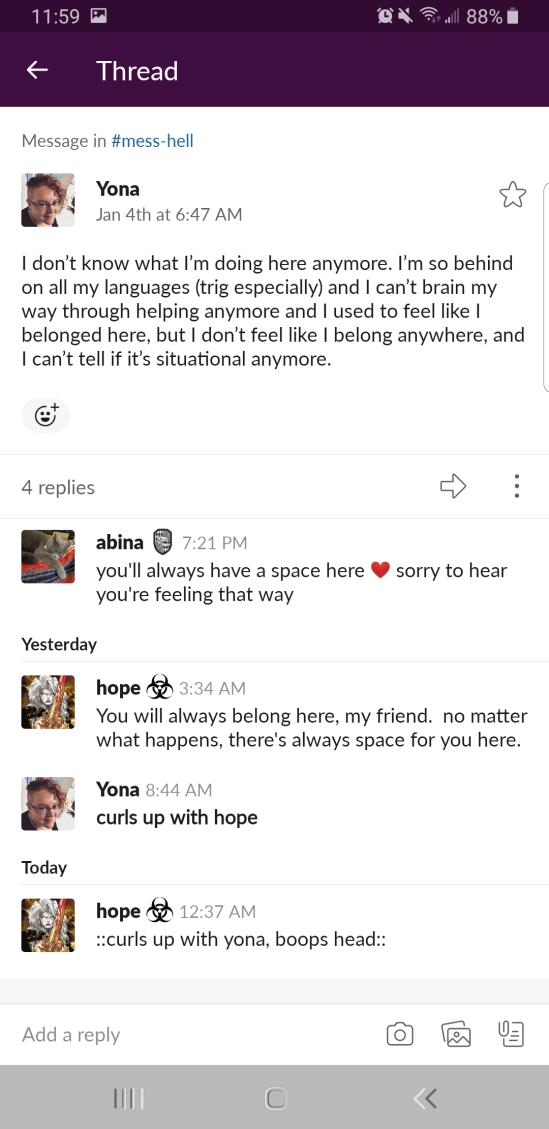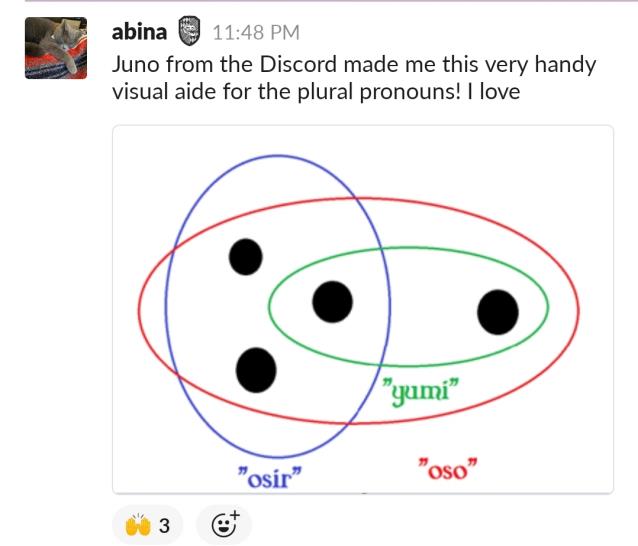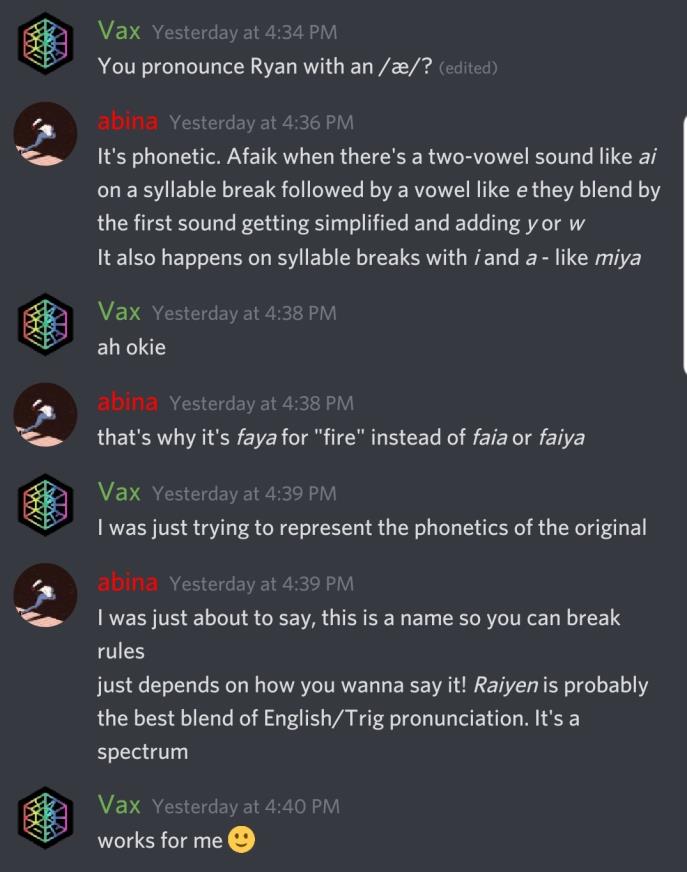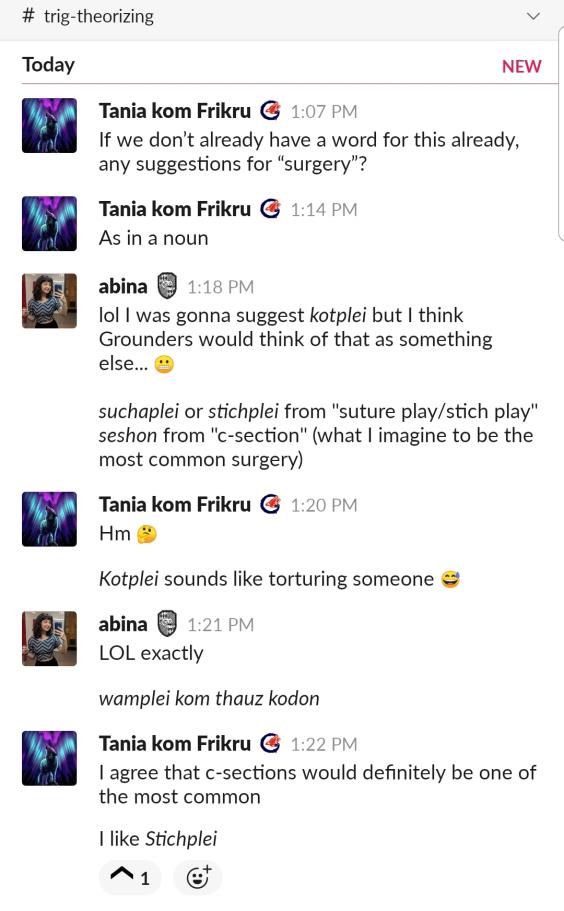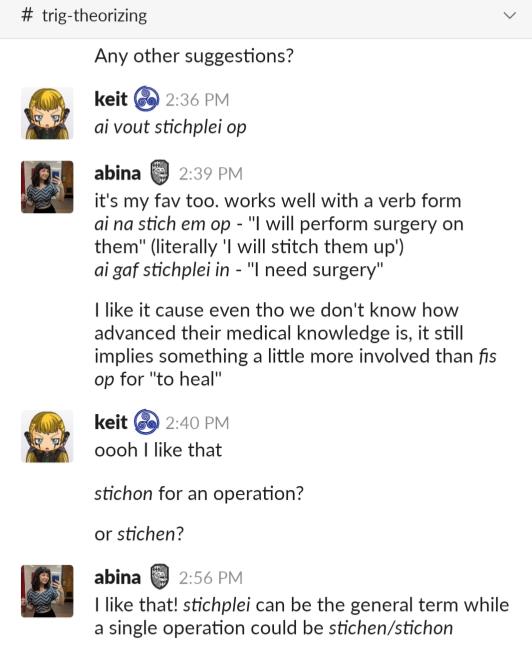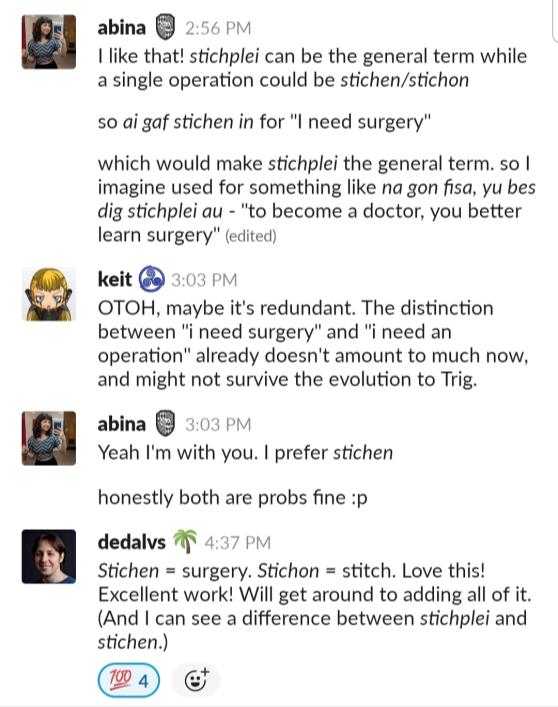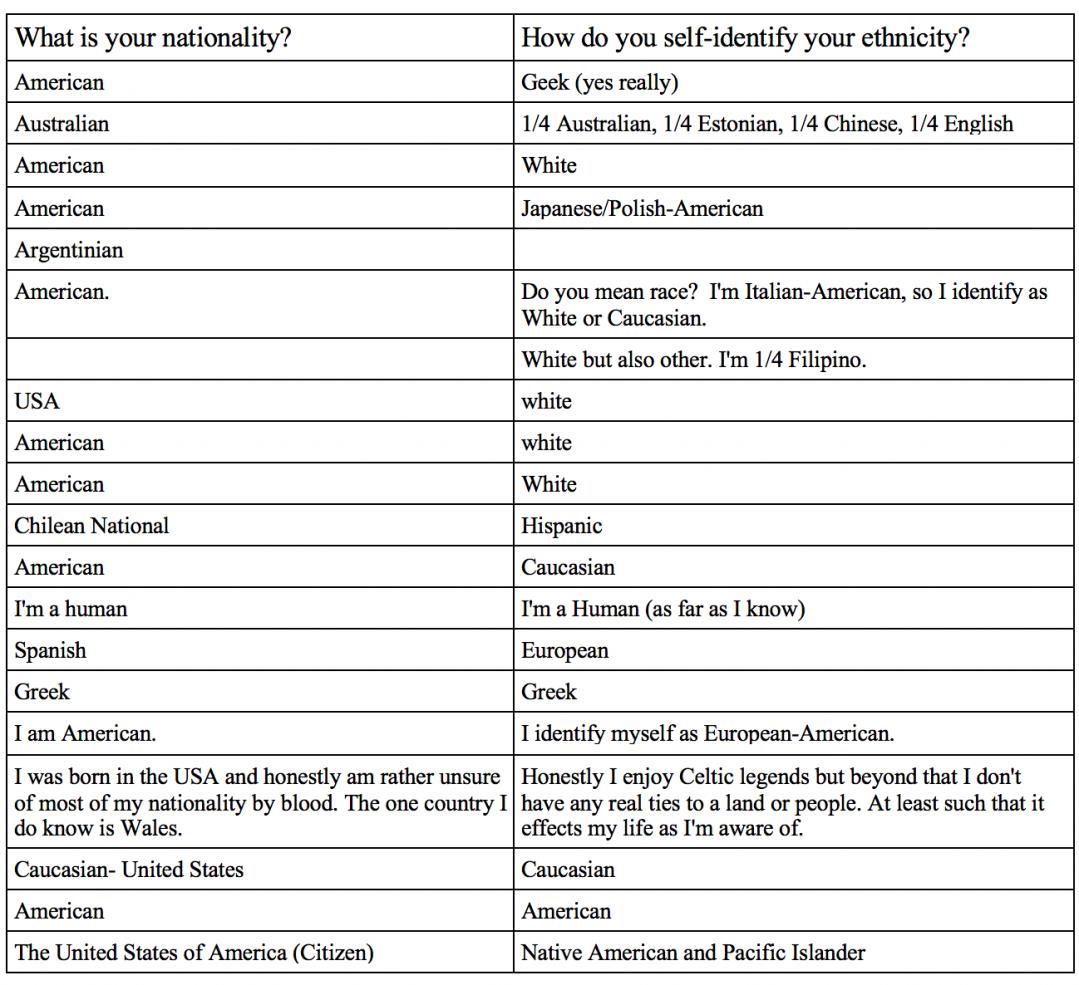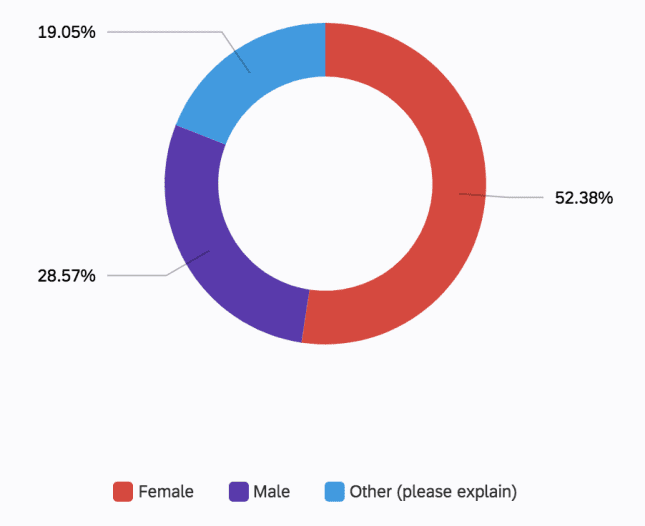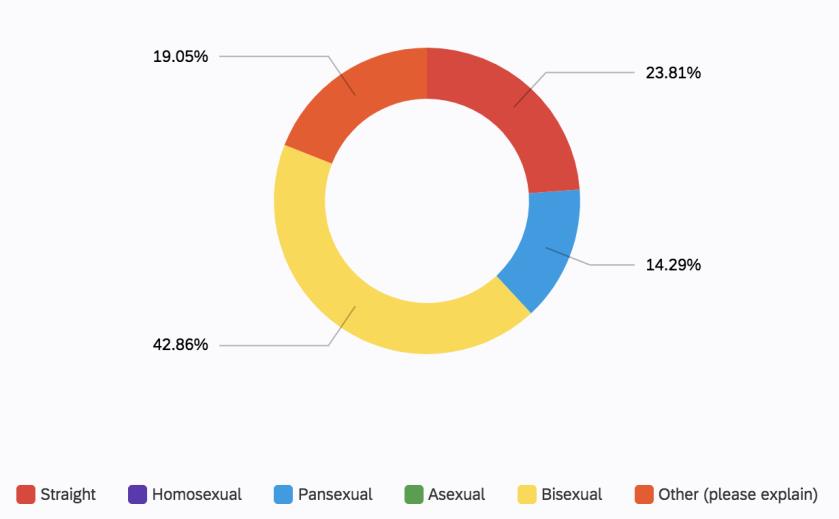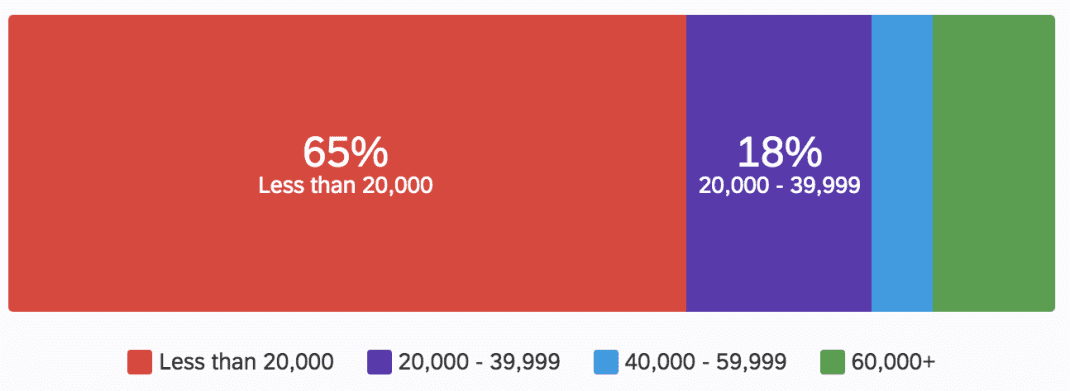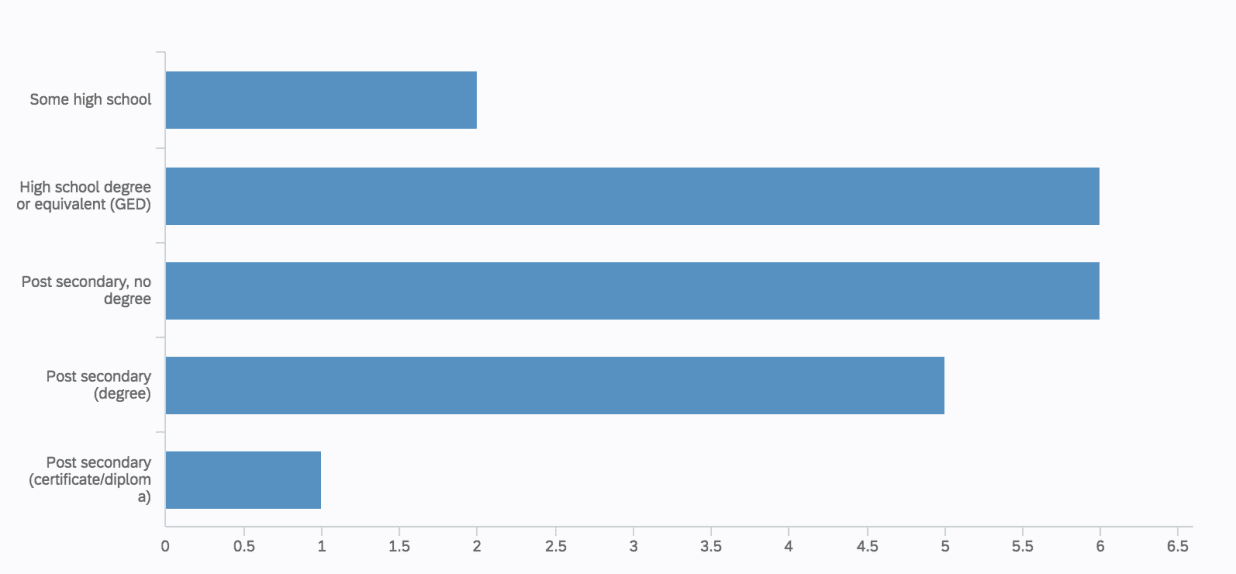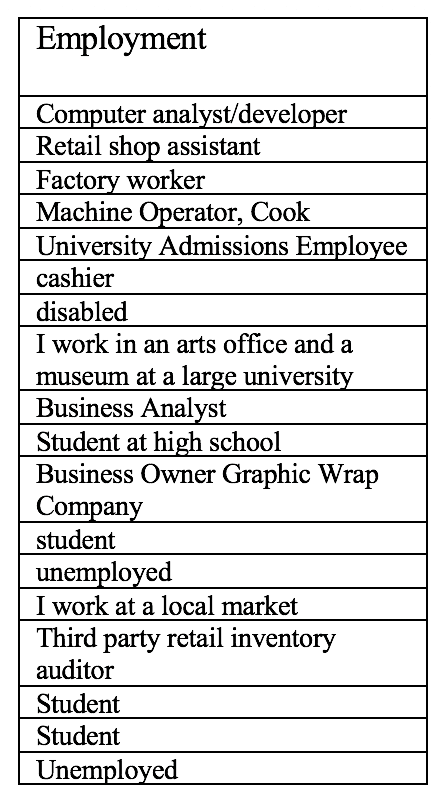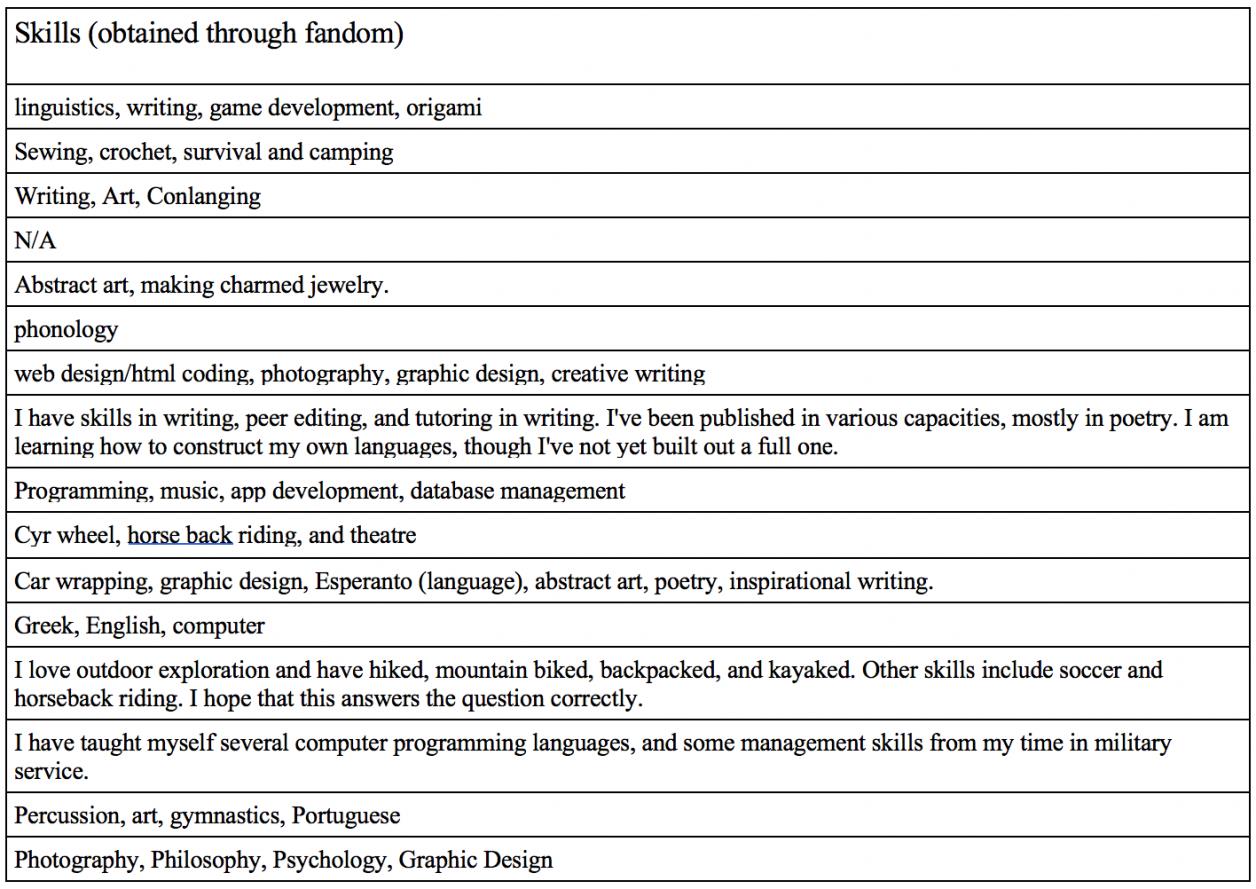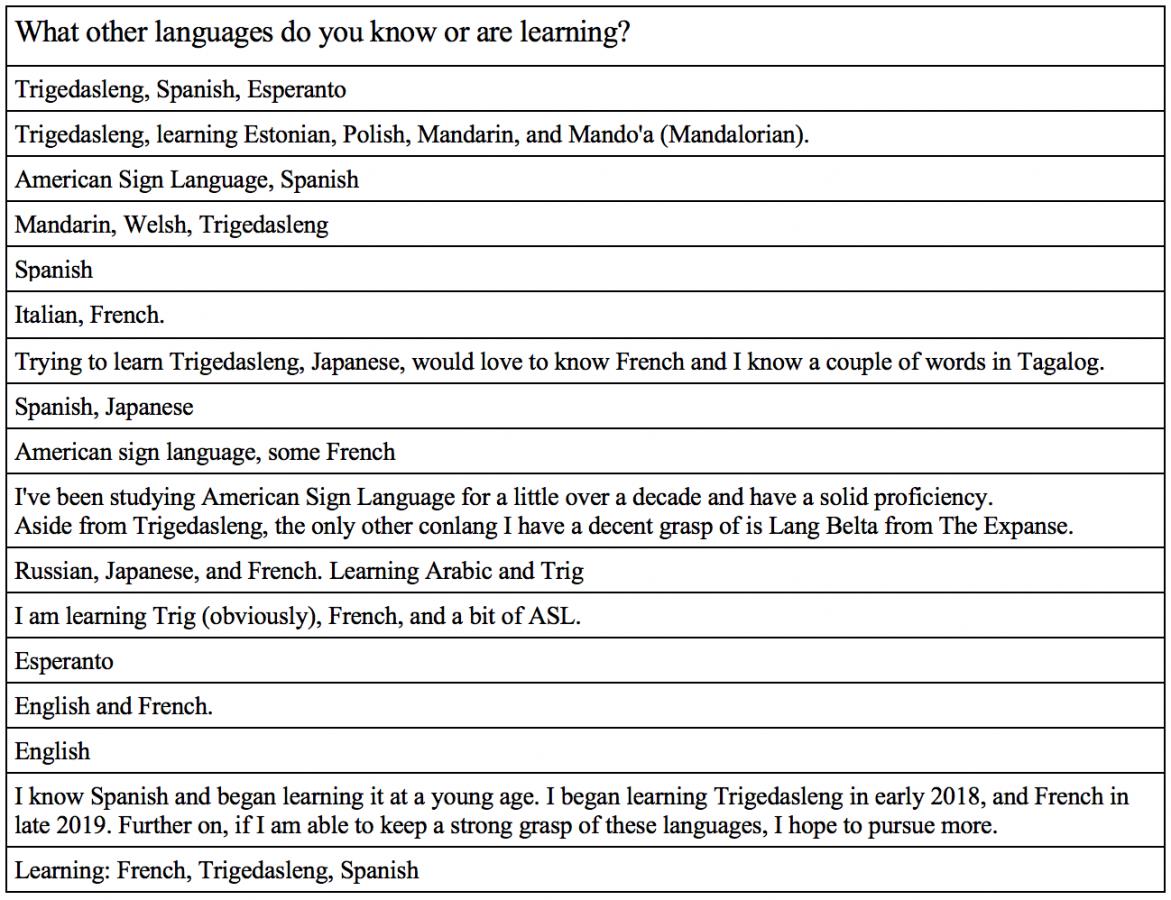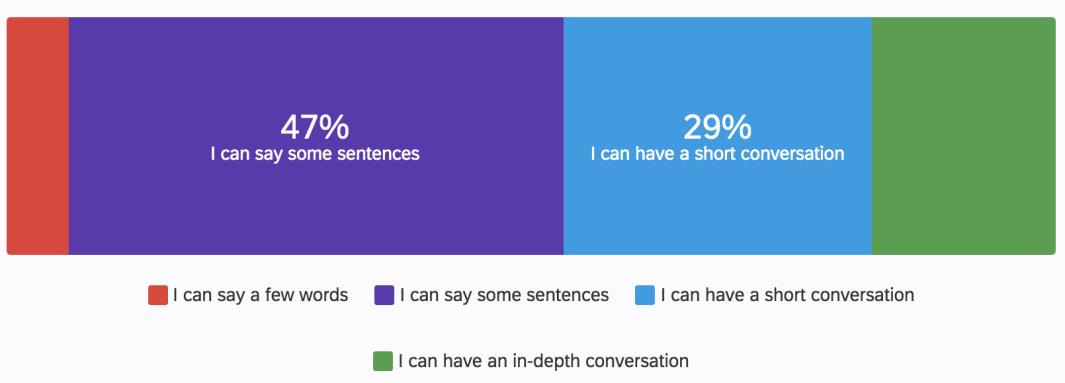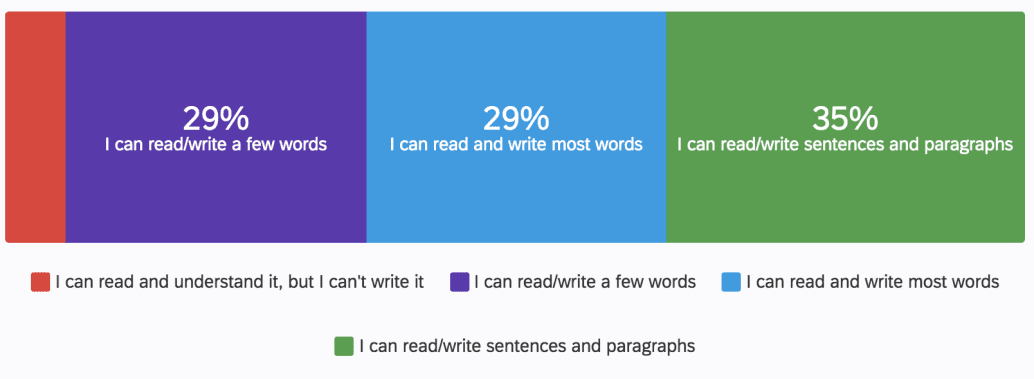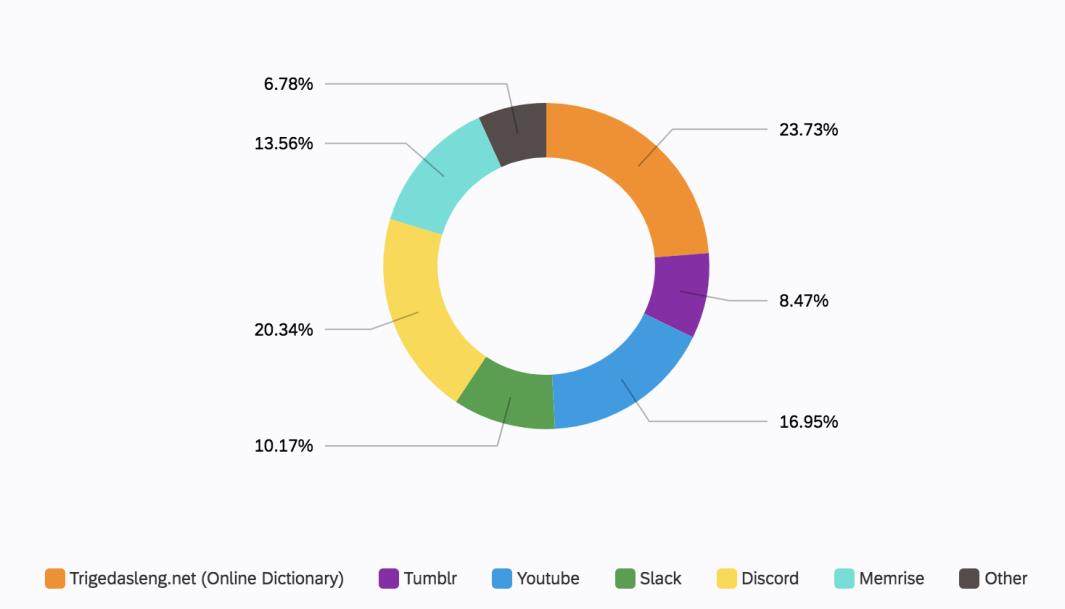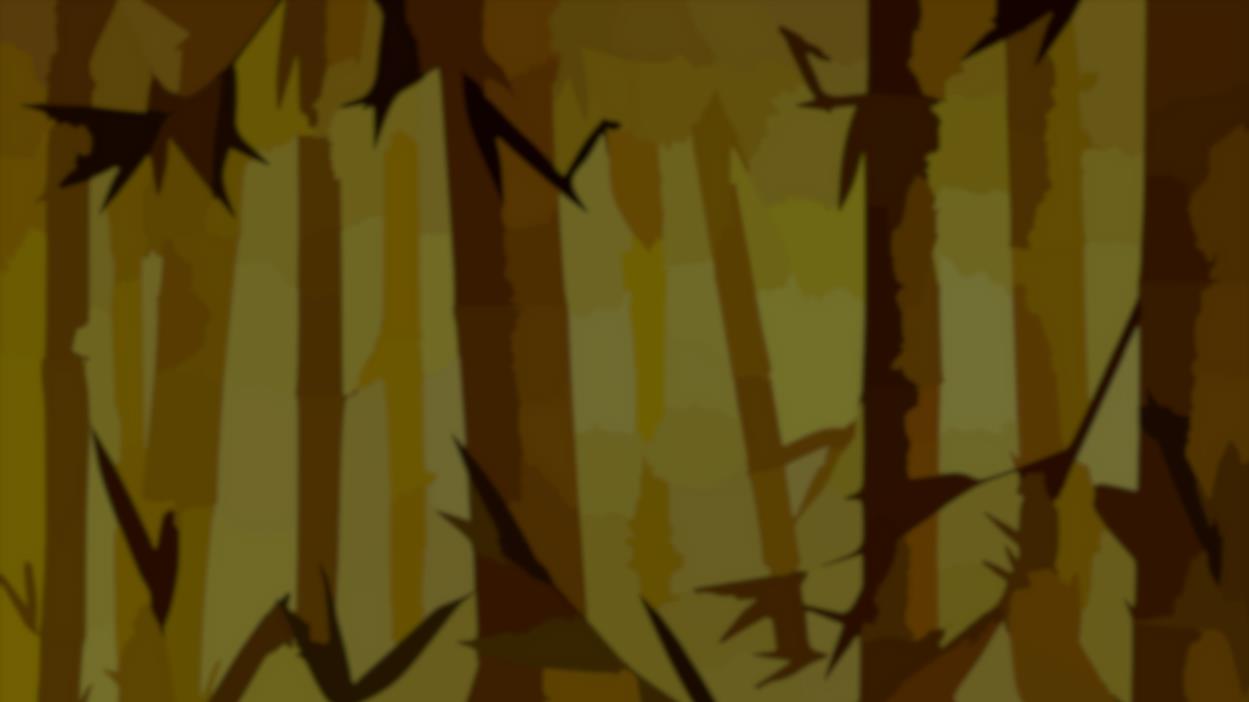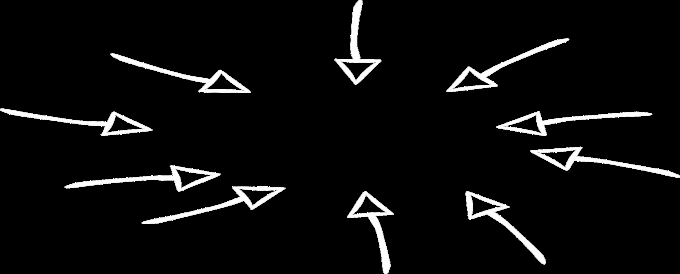You’re the Only One Who Knows My True Identity:
How Fandoms Create New Identities for Constructed
Language Learners
Autor: Brianna Peacey
MS-Datum: 09-03-2020
FL-Datum: 11-01-2020
FL-Nummer: FL-00006E-00
Zitat: Peacey, Brianna. 2020. “You’re the Only One
Who Knows My True Identity: How Fandoms
Create New Identities for Constructed
Language Learners.” FL-00006E-00, Fiat
Lingua,
November 2020.
Urheberrechte ©: © 2020 Brianna Peacey. Dieses Werk ist lizenziert
unter einer Creative Commons Namensnennung-
NonCommercial-NoDerivs 3.0 Unportierte Lizenz.
http://creativecommons.org/licenses/by-nc-nd/3.0/
Fiat Lingua wird von der Language Creation Society produziert und gepflegt (LCS). Für mehr Informationen
über die LCS, Besuchen Sie http://www.conlang.org/
You’re the Only One Who Knows My True Identity:
How Fandoms Create New Identities for Constructed Language Learners
bis
Brianna Peacey
Foreword
This research document was created as part of the fulfillment for a Master of Arts in
Interdisciplinary Graduate Studies at the University of British Columbia – Okanagan. It is a
These, which is written under supervision and contains an overview of the research conducted,
theoretical framework, methodology and methods used, and results for further discussion. If you
want to see the original thesis, it is located on the UBC website cIRcle here:
Ii
Abstract
This thesis explores the intersections between fan studies, Feminismus, language, Identität, und
belonging. Um dies zu tun, I employed community-based research with the online language fan
community, Slakgedakru, who spend time learning the language Trigedasleng. Trigedasleng was
made for the television show The 100, which airs on The CW Network. The members of
Slakgedakru consist of both fans of the language and fans of the show. Many assumptions about
fans have cast them in a negative light and this research also aims to dispel misconceptions about
fans. Fans are more often intelligent, mature, and reasoning than they are portrayed. Das ist
especially true of language fans, who spend their time learning grammar and vocabulary, und, in
the case of Slakgedakru, expanding the language. Slakgedakru’s international member base
emphasizes the importance of online research. This research consisted of two phases: the first
included a general survey for anyone learning Trigedasleng and an interview with the language’s
creator, David J. Peterson; the second phase involved two text-based focus groups, one on the
software platform Slack and one on the software platform Discord, both of which Slakgedakru
belong to. Throughout these phases, I also conducted participant observation within the general,
public chat channels on both platforms. Once these phases were complete, I analyzed the data
and found that Slakgedakru is comprised of intelligent, mature fans who are inclusive and
diverse in gender, sexuality, and ethnicity. The community itself provides a space where the
language, the show, and real-life intermingle and this produces discussion on real-world,
complex topics. Außerdem, members are able to explore their diverse genders and sexualities
with a community of like-minded individuals. By accessing these alternative worlds, members
are able to re-imagine possibilities for the real world.
iii
Lay Summary
This community-based research was done with Slakgedakru, an online community of
Trigedasleng language learners. Trigedasleng was created by David J. Peterson for the television
show The 100. The key goals of this research were to combat fan stereotypes, contribute to fan
studies research, explore ways to do online research, and understand how community and
language are tied to identity and a sense of belonging. The methods used in this research, welche
utilized feminist and identity theories, and fan studies were surveys, an interview, and focus
group discussions. I found that Slakgedakru members shared the common interest of
Trigedasleng, but also a sense of belonging in the community, which is highly diverse,
particularly in gender and sexuality. By thinking about real-world issues through the lens of
Trigedasleng and The 100, Slakgedakru members imagine how these issues can unfold in
alternative ways and make the real world a better place.
iv
Ethics approval for this research was given by all participants, and The University of British
Columbia Okanagan Behavioural Research Ethics Board H19-02189.
Preface
v
Inhaltsverzeichnis
Foreword …………………………………………………………………………………………………………………………………… Ii
Abstract …………………………………………………………………………………………………………………………………….iii
Lay Summary ……………………………………………………………………………………………………………………………. iv
Preface ………………………………………………………………………………………………………………………………………. v
Inhaltsverzeichnis ………………………………………………………………………………………………………………………. vi
List of Figures ……………………………………………………………………………………………………………………………. X
Acknowledgements ……………………………………………………………………………………………………………………. xi
Dedication ………………………………………………………………………………………………………………………………..xiii
Chapter 1: Introduction and Literature Review ………………………………………………………………………… 14
1.0
Einführung ……………………………………………………………………………………………………………… 14
1.1 Research Questions …………………………………………………………………………………………………… 15
1.2 Research Background………………………………………………………………………………………………… 16
1.2.1 Slakgedakru ……………………………………………………………………………………………………….. 19
1.3 Constructed Languages ……………………………………………………………………………………………… 20
1.3.1 Linguistic Anthropology and Constructed Languages ……………………………………………… 22
1.4 Who are Fans? ………………………………………………………………………………………………………….. 22
1.5 What is Fandom?………………………………………………………………………………………………………. 26
1.5.1 Media-Fandoms ………………………………………………………………………………………………….. 27
1.5.2 Conlang Fandoms ……………………………………………………………………………………………….. 27
1.5.3 Trigedasleng Fandom ………………………………………………………………………………………….. 28
1.6
Fan Studies ………………………………………………………………………………………………………………. 28
1.6.1 Benefits to Fan Studies ………………………………………………………………………………………… 29
1.6.2 Critique of Fan Studies ………………………………………………………………………………………… 30
1.6.3 Using Fan Studies in Research ……………………………………………………………………………… 30
1.7
Fan Spaces ……………………………………………………………………………………………………………….. 31
vi
1.7.1 Problematic Fan Spaces ……………………………………………………………………………………….. 32
1.7.2 Positivity Through Fan Spaces ……………………………………………………………………………… 32
1.7.3 Using Fandom to Address Real-World Issues …………………………………………………………. 34
1.8 Thesis Organization ………………………………………………………………………………………………….. 36
Chapter 2: Theorie, Methodologies, and Methods ………………………………………………………………………. 37
2.0 Outline …………………………………………………………………………………………………………………….. 37
2.1 Theoretical Framework ……………………………………………………………………………………………… 37
2.1.1 Language Ideologies ……………………………………………………………………………………………. 38
2.1.2 Feminist Theory ………………………………………………………………………………………………….. 39
2.1.3
Identitätstheorie …………………………………………………………………………………………………… 42
2.2 Methodologies ………………………………………………………………………………………………………….. 44
2.2.1 Grounded Theory ………………………………………………………………………………………………… 44
2.2.2 Community-Based Research ………………………………………………………………………………… 45
2.2.3 Fan Studies Methodologies ………………………………………………………………………………….. 46
2.2.3.1 Online Fan Research ……………………………………………………………………………………. 47
2.3 Methods …………………………………………………………………………………………………………………… 48
2.3.1 Participant Observation ……………………………………………………………………………………………… 50
2.3.2 Phase One: Survey and Interview ………………………………………………………………………….. 50
2.3.2.1
Survey ……………………………………………………………………………………………………….. 52
2.3.2.2
Interview ……………………………………………………………………………………………………. 52
2.3.3 Phase Two: Text-Based Focus Groups …………………………………………………………………… 53
2.4 Data Analysis …………………………………………………………………………………………………………… 53
2.5
Summary …………………………………………………………………………………………………………………. 55
Chapter 3: Results of Phase One and Participant Observation …………………………………………………… 56
3.0 Outline …………………………………………………………………………………………………………………….. 56
3.1
Participant Observation ……………………………………………………………………………………………… 57
vii
3.1.1 Notes …………………………………………………………………………………………………………………. 58
3.1.2 Examples …………………………………………………………………………………………………………… 60
3.2 David J. Peterson’s Interview …………………………………………………………………………………….. 66
3.3
Survey Quantitative Data …………………………………………………………………………………………… 69
3.4
Survey Qualitative Data …………………………………………………………………………………………….. 76
3.4.1 Family, Home, Belonging ……………………………………………………………………………………. 76
3.4.2 The 100 ……………………………………………………………………………………………………………… 78
3.4.3 Trigedasleng ………………………………………………………………………………………………………. 80
3.4.4 Why Trigedasleng? ……………………………………………………………………………………………… 82
3.4.5 Experience Within the Fandom …………………………………………………………………………….. 83
3.4.6 Gender and Sexuality…………………………………………………………………………………………… 86
3.5
Summary …………………………………………………………………………………………………………………. 88
Kapitel 4: Results of Phase Two – Focus Group Discussions ……………………………………………………… 90
4.0 Outline …………………………………………………………………………………………………………………….. 90
4.1 Text-Based Focus Groups as a Method ……………………………………………………………………….. 92
4.2
Focus Groups …………………………………………………………………………………………………………… 94
4.2.1 Morality and the Future ……………………………………………………………………………………….. 95
4.2.2 Community and Support ………………………………………………………………………………………. 98
4.2.3 Gender, Sexuality, and Representation…………………………………………………………………… 99
4.2.4 Fan Meet-Ups …………………………………………………………………………………………………… 102
4.2.5 Apocalyptic Content ………………………………………………………………………………………….. 103
4.3
Future Considerations for Text-Based Focus Groups …………………………………………………… 105
4.4
Summary ……………………………………………………………………………………………………………….. 107
Kapitel 5: Discussion and Conclusion …………………………………………………………………………………….. 109
5.0 Outline …………………………………………………………………………………………………………………… 109
5.1 Overall Results and Research Questions…………………………………………………………………….. 109
viii
5.1.1 Question One ……………………………………………………………………………………………………. 109
5.1.2 Question Two …………………………………………………………………………………………………… 111
5.1.3 Question Three …………………………………………………………………………………………………. 112
5.2 Contributions to Fan Studies …………………………………………………………………………………….. 113
5.2.1 Methods …………………………………………………………………………………………………………… 113
5.2.2 Fan Scholars …………………………………………………………………………………………………….. 114
5.2.3 Reflexivity ……………………………………………………………………………………………………….. 115
5.3 The Broader Picture ………………………………………………………………………………………………… 116
5.3.1 Fans as a Whole ………………………………………………………………………………………………… 117
5.3.2 Feminist Studies ……………………………………………………………………………………………….. 118
5.3.3 Language and Belonging ……………………………………………………………………………………. 118
5.4
Potential Limits and Strengths ………………………………………………………………………………….. 119
5.5 Directions for Future Research …………………………………………………………………………………. 121
5.6 Conclusion……………………………………………………………………………………………………………… 123
Bibliography …………………………………………………………………………………………………………………………… 125
Appendices……………………………………………………………………………………………………………………………… 130
Anhang A: Advertisements for Survey ……………………………………………………………………………… 130
Appendix B: Poster for Survey …………………………………………………………………………………………… 131
Appendix C: Advertisement for Focus Groups……………………………………………………………………… 132
Appendix D: Survey Questions…………………………………………………………………………………………… 133
Appendix E: David J. Peterson’s Interview Questions …………………………………………………………… 138
Appendix F: Focus Group OpeningClosing Remarks and Questions……………………………………….. 139
Appendix G: Letter of Research Approval from Slakgedakru ………………………………………………… 141
ix
List of Figures
Figure 1: Showing how active members are outside of channels. ………………………………………… 19
Figure 2: A member showing appreciation for the sense of community. ………………………………. 61
Figure 3: Members showing support. ………………………………………………………………………………. 62
Figure 4: A pronoun visualization created by a community member. …………………………………… 63
Figure 5: A discussion on pronunciation. …………………………………………………………………………. 63
Figure 6: Members creating a new word. …………………………………………………………………………. 64
Figure 7: Members creating a new word. …………………………………………………………………………. 64
Figure 8: Members creating a new word. …………………………………………………………………………. 65
Figure 9: Member’s nationalities and ethnicities. ………………………………………………………………. 70
Figure 10: A visualization of members’ genders. ………………………………………………………………. 71
Figure 11: A visualization of members’ sexualities. ………………………………………………………….. 72
Figure 12: Members’ income levels. ……………………………………………………………………………….. 72
Figure 13: Members’ education levels. …………………………………………………………………………….. 73
Figure 14: Member’s areas of employment. ……………………………………………………………………… 74
Figure 15: Skills members have gained. …………………………………………………………………………… 75
Figure 16: Languages that members are learning. ……………………………………………………………… 76
Figure 17: Members’ conversational/spoken fluency. ………………………………………………………… 80
Figure 18: Members’ writing/reading fluency. ………………………………………………………………….. 80
X
Acknowledgements
Thank you to Trigedasleng learners, and Slakgedakru, the community that I spent the last couple
years getting to know. Not only was it a fantastic research experience, it was also a wonderful
time getting to know the members in this community. I am very happy to have been a part of
your lives, and to have shared in your struggles, dreams, and goals, and hope to continue to do so
in der Zukunft.
I would like to acknowledge my research supervisor, Dr. Christine Schreyer, for all that she has
done for me. Over the past two years, and even before that, you were calm, patient, and always
kind. You gave me the confidence to continue my academic career and the tools to manage MA
Leben. I am forever grateful for your guidance and your ability to set boundaries for me when you
knew I was struggling or taking on too much. You were always available and ready to help, sogar
if you were very busy. Most of all, I appreciate the humanity that you bring to a supervisor and
student relationship; it always felt professional and at the same time it felt like friendship. Aus
the bottom of my heart, thank you! <3
I would also like to thank my supervisory committee, Dr. Ilya Parkins and Bonar Buffam. Both
of you were very quick organized when it came giving me feedback. You both gave valuable insights for
research aided in areas that was less knowledgeable about. will remember your advice future am thankful the
discussions we shared. Ricki-Lynn, are reason stayed on track never up. spent countless hours listening work through
ideas
navigate graduate life. wouldn’t have been able do this without constant encouragement late night, coffee fueled phone
calls. know said xi I’d cite you, so here is a completely out context quote: “These unexpected,
powerful moments” (Achilles 2018, 97). Thank friend, mate, always being there me. husband, Dustin Issel. patient
with
me, even became frustrated tricky word document or difficult reading. More than anyone, listened academic rambling,
complained. appreciate support continued endeavours, had faith pushed right direction. love you. Shout family
putting up ramblings throughout research. didn’t understand what saying but listened. In particular, sister Ashley Peacey, lot
time helping school, writing, move go PhD. A big Language Creation Society funding part Their
endeavour expand literature conlangs one hope continue publications. As well, University British Columbia – Okanagan.
This school has second home many years, grateful opportunity study there. all those who provided extra
along way: Mike Evans, CCGS, The UBCO Anthropology
department, cohort. xii Dedication thesis dedicated fans found still seeking place belong within their fandom. xiii Chapter
1: Introduction Literature Review 1.0 childhood sitting floor, playing Super Nintendo, competing against siblings friends Halo
matches. At dinner, sometimes be allowed set TV trays step into world Star Wars Chronicles Riddick. Every weekend
read books about characters new worlds, rather
homework. These worlds fascinated partly because they exciting, opened way thinking own world. evening particular: stay
watch movie Riddick, stars Vin Diesel as heroic semi-
villain. specifically other believed he was, some sense, evil.
fact,
ends hero not nice obeyed rules, practical caring. Characters interesting humans deeper level. understood what’s surface isn’t
whole much more depth these live in, and, our research, wanted explore ways impacted others how participating fan
activities, fandoms, communities shaped identity understandings people. chapter, explain questions background, well background community with. follow by detailing conlang1
is, fandom is. chapter then outlines field studies chapters. 1
Conlangs
referred
created languages, invented artificial fictional languages. 14 My called Slakgedakru.2 consists language learners. They learn television series 100, Trigedasleng.
spoken
grounders,
group apocalyptic survivors from Earth. originated
English
evolved
over become its language. Members spend learning language, expanding each translate texts, among things. addition,
engage topics based experiences real lives. meet virtual space. Appadurai (1996) says “…fantasy now social practice” (54)
Slakgedakru, true. use 100 Trigedasleng real-world related political struggles. Many members Slakgedakru show, dedicate fan-based activities separate activities.
chapter. 1.1 Research Questions approach began general interest mediated educational linguistic anthropology, which
basis analysis, addition feminist theory, grounded theory (outlined Two). Using an interdisciplinary helpful often situated disciplines does
core methodology. utilized including theoretical methodological aspects, prevalent cultural studies, where exists. included reflexivity approach, tied anthropology.
However, Evans Stasi (2014) suggest using 2 name community, Slakkru. breaks down Slak, Geda, Kru. Slak double meaning used Slack software meaning, easy, easy going, open. Geda means nation together Kru 15
reflections power, forms knowledge production, (or researcher) representation (14). focuses three key questions: 1. What fans’ motivations Trigedasleng, indicative broader
power relations? 2. How participation (through learning, art, cosplay, etc.) affect one’s sense belonging connection,
play role larger themes identity, gender, language? 3. can constructed universes, allow us complicated alternative space (beyond
world)? developed interests, adapted participant observation discuss capture values interests order benefit them When speaking community-based Margaret R.
Boyd notes, “[l]earning co-created unidirectional…” (4). learned collaborative way. invited see potential topic David J. Peterson, creator member Slakgedakru.
once entered particularly keen participate helped create tools. administrators especially facilitating continuously providing feedback
1.2 Background science fiction CW network. plot show begins space, after post-apocalyptic event occurred
several people managed escape onto shared station. resources station begin run 97 earlier expected recuperation planet Not
knowing if habitable, authorities 16 ship debate whether need cull population. Instead, send juvenile delinquents Earth’s ready habitation. On
station, someone commits bad enough crime, “floated,” jettisoned Since death sentence considered too extreme minors, incarcerates minors
until 18th birthday, hold trial individuals incorporate themselves back society. currently custody comprised children between approximately
10
years
17 old. main character, Clarke, older minors. Her mother sat high position tries
her daughter chance start again risk floated. After Earth, find Earth habitable. fitted technological bracelet transmits
information vitals short period remove gain freedom prison. prominent family, stop it’s safe come
down. she soon learns father’s demise comes off too. Everyone concerned dying due dangers ground. end first
season, encounter another realize everyone perished apocalypse. grounders (by 100) speak (Trig). later
two groups survivors, living underground top alive still. Those English, modified privately. similarly creole3,
missing contact required creole exist since purely origin. words purposely altered confuse enemies, such sleep: Rid op
Other sound similar different meaning: Ai hod yu in. While might make certain pieces easier comprehend speaker,
languages mutually intelligible. cannot easily other. conversation, speaker only pick few words, then, coded secrecy. language’s
creator, contracted grounder met at screening film “Conlanging: Art Crafting Tongues”, facilitate. explained
knew large together, largest across any his surprising, considering popularity Game Thrones, for. prompted focus
time, this, interested participates development, reserved 3A formed form time. consist
dominant
secondary makes
most grammar vocabulary. solely changing specific keeping (English) core, introduced. 18 want (see Three details).
1.2.1 online learners, desire first, interactions done media platforms. Several realized decided Slack4 account open anyone Over
grew boasts 600 members, although active. By mean actively public posts, private messaging, lurking,
while join don’t regular basis. Figure 15, majority activity takes messaging. Showing active outside
channels. extends platforms Twitter Instagram, recently begun Discord. Discord function advantages disadvantages. For example, ability
threads organize chatter 4 platform allows users chat written text
(and cases voice) variety acts hub available channels accessible account. 5 All participants figure permission
thesis. 19 effectively, operated voice chose only, opted both; joined originated. admins transfer important needed.
Most necessary Trigedasleng.net Wiki page, another. requirement joining 1.3 Constructed Languages Klingon, Trek, “…a consciously brought life” (Okrent 2009, 4).
communicate are. known conlang, generally purpose individuals, opposed natural develop naturally (Cheyne 2008; Destruel 2016; Okrent 2009). traceable origin point developed, conditions present
pidgins colonial encounters, slave relations. spoke combining resulted pidgin. Pidgins origins created, whereas purpose. auxiliary ease communication differing
speakers,
artistic aesthetic value & television). 20 Auxiliary (auxlangs) made intent universal Frequently, bringing peace
better understanding tension-riddled countries, Esperanto. Artistic
(artlangs), thesis, purposes. includes works value. script
may beautiful fit piece media. conlang. existed years. Originally, works, recent television. Among well-known
Tolkien’s Lord Rings’ Quenya Sindarin Marc
Okrand’s Klingon. Peterson worked Thrones (Dothraki, Valyrian), Paul Frommer Na’vi Avatar, Christine Schreyer Kryptonian
Man Steel. seen increase during times economic Heller (2015) ““[i]t promises democracy inequalities capitalism, discourse rights encounters
differences shape nations, races,
genders, classes. Invented emerge crucible” focusing auxlangs, argue artlangs fill void. learners access interacting identities
premise examine combination fandom’s universe consider realities. 21 issues surrounding morality,
hierarchies differently experience today. Through view, possible investigate political, hierarchical, stereotypical boundaries. 1.3.1 Linguistic human
beings, ways. communicating ourselves; groups; advantage; art aesthetic; purposes; status, on. idea anthropology language(s) determine worldview6
(Whorf 1956). There strong weak version hypothesis determinism, purposes subscribe version. holds determines worldview, multiple
alter worldview it, version, keeps grasp offered perceived true fandoms. Fans capabilities
worldviews interpret components peers. First, though, exactly one. 1.4 Who Fans? Ever young, Wars.
fan, think immediately watching original films. 6 Worldview refers someone’s understandings, perceptions, beliefs 22 reading novels,
films forcing poor parents too), dressing characters. Whenever purchase something, related. vest pair striped pants feel, cool
Han Solo. viewed Even though story galaxy far, far away, felt could relate imagine
Wars’ similar. Being today involvement various People circles identify gifts information. Becoming constructing
typically process drawn isolated moments result creation (Duffett
2013).
transition unaware
happening fan. defined particular pop culture; personal, affective factors. emotionally connected fandoms practice associated Although single beliefs, interpretations begs
question validate fan? Duffett “…almost self-identifies sense” (23). ‘Fan’ originally derives ‘fanatic,’ “… excessive
religious worship…” (Jenkins 2012, 12). moved away 23 applied amounts enthusiasm stereotypes Stereotyping common media, misrepresented. (2013) explains
portrayed crazy, brainless immature Booth 2018; Evan Mafalda 2014; Jenkins 2012; Yoon 2019). He adds
likened
addicts, obsessive dangerous. traits isolation portrayals tend depict unable signals 2013, 161). Throughout history, women equated “impulsiveness, immaturity”
feminised (Wilson 2018). Wilson (2018) marketing companies market items towards notion buy things impulsively
emotionally. According Wilson, believe making pink purchasing them, proven false (435). She fans, “…often depicted mindless
consumers, susceptible advertising impulse” historically, middle-aged men, men masculine non-fans, ascribed feminine characteristics, gendered
subjects. Furthermore, enjoyment fantasy narratives fantasizing meeting celebrity lack ‘a reality’ feeds psychotic, crazed stereotype. combats explaining rare
stalking murdering dealing mental health illnesses 24 ‘normal’ hierarchy acceptable Certain behaviours opinions valued
others. (2012) expands Sci-Fi looking Trek fans. definitions unspoken norms must abide extreme. It define
rules individual because, identities, vary unique discusses control narrative around Comedy tropes portray negative fun enthusiastic passionate (like slash
fiction7) (2.12). mentions “[f]an practices frequently comfort, relaxation pleasure frustration unavailable intimacy” (171). likely protect harm seek relationships 173 178;
term ‘fan’ widely everyday contexts.
seem means, unclear just constitutes compared ‘true fan.’ reasons enjoying rational subjective emotion-based logical (Chin 245). 7
Slash same gender romantic relationship, regardless relationship 25 Also, consume differ viewer watched nor fan-related
Just differently, elements distinct computer internet globally 39 43). 1.5 Fandom? phenomenon, in-person virtually (Gray, Sandvoss, Harrington 2017;
2015). identifying component “[a]t initial deeply connect with, least object interest” (61). notes claim culture fans”
(16). shows itself act. Communities topics, sport, music. that: … fandom, recognize actually things: debate. hand, inspirational pursuit.
other, discursive construct: something represented journalists, scriptwriters, academics (446). Fandoms allowing express offline like-minded individuals. conlang
trying little feel (Kazimierczak 2010; enjoy history focused 26 itself. creating tools, developing grammatical features,
translations, involve non-verbal fanfiction, art. 1.5.1 Media-Fandoms describes as, recognition positive, relatively deep, emotional connection element popular culture”
(24). Popular include film, television, books, artwork, merchandise these. Media sports music require player, team, teams.
however, than, team musician. imaginary rarely largely base exist. recently, overlap authors producers movies, brings authenticity fan’s
creative
1.5.2 Conlang language-specific (also fanlang), produce translations materials. cases, encompass contemporary correlates put perspective. 27
Rings overlap, media-related latter 1.5.3 Fandom Specifically, noted above, speakers 100. call controls fan-
developed
exists (besides canon8 material show).9 but, split wider number members. chosen transnational, thriving, growing understandings;
(Bourdaa 2015; Bridges 1.6 Fan Studies area study, 1990’s, discipline, multidisciplinary (Ford Turk examines interact another, themselves,
populations. explores level cohesive group. 8 Canon official owned production company. Non-canon fan-made fiction, dictionaries. 9 Included YouTube
videos, Tumblr pages,>

